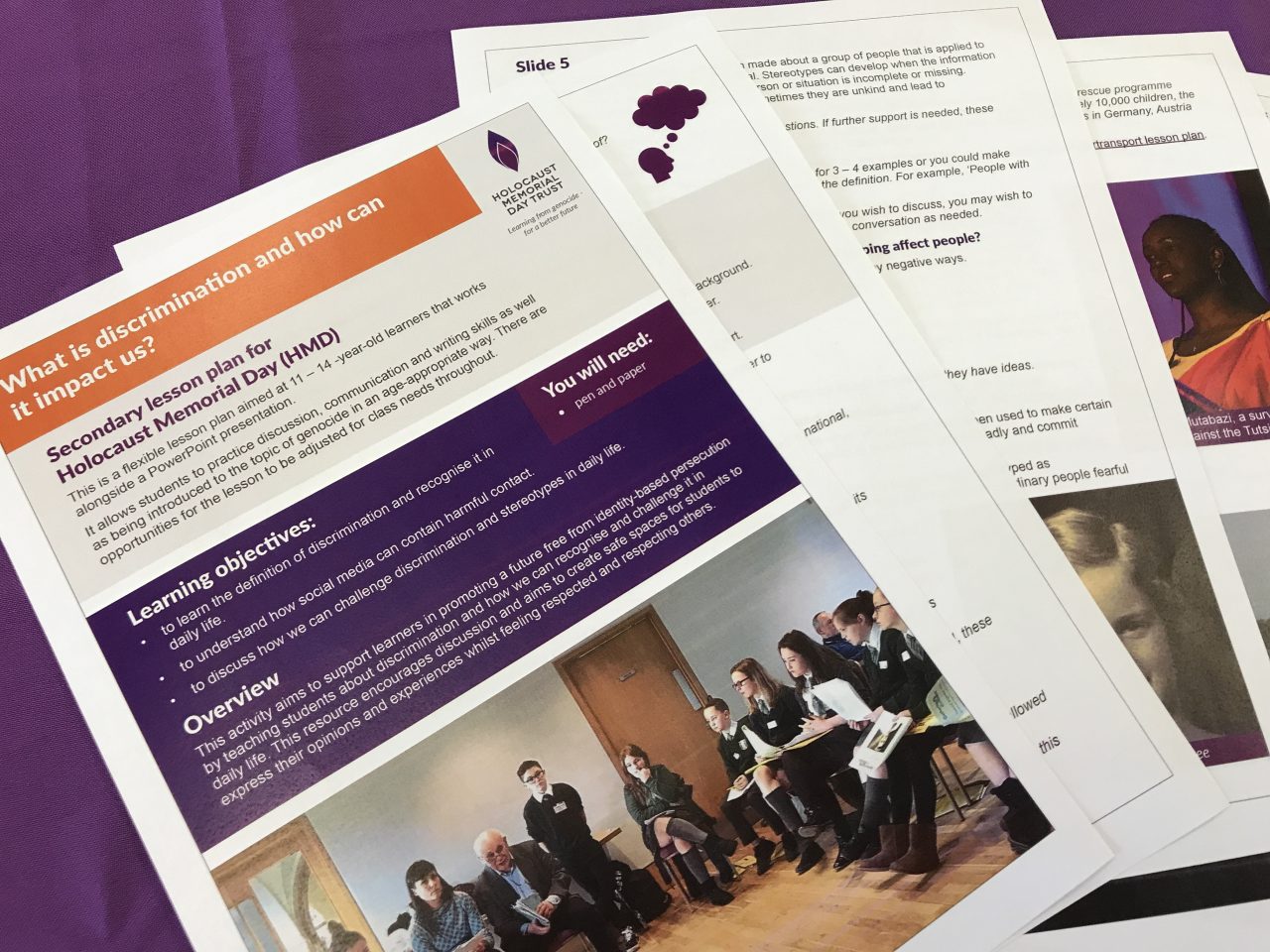
HMD 2025 resources
We have launched new resources to help you mark HMD 2025 in meaningful and engaging ways.


We have launched new resources to help you mark HMD 2025 in meaningful and engaging ways.

Enter our HMD 2025 competition for secondary school students to mark the 30th anniversary of the genocide in Bosnia.

We were joined by 200 people online as we launched brand new resources for HMD 2025.

Holocaust Memorial Day is the day for everyone to remember the 6 million Jews murdered during the Holocaust, alongside the millions of people murdered under Nazi persecution of other groups, and in more recent genocides in Cambodia, Rwanda, Bosnia and Darfur.
Between 1941 and 1945, six million Jewish men, women and children were murdered by the Nazis and their collaborators. Their attempt to murder all the Jews in Europe, shook the foundations of civilisation.
The Nazis targeted anyone they believed threatened their ideal of a ‘pure Aryan race’, including Roma and Sinti people, disabled people, gay people, political opponents and others.
From 1975 to 1979, the Khmer Rouge, led by Pol Pot, imposed an extremist programme to reconstruct Cambodia. Millions of people died through starvation, disease and exhaustion, and thousands were executed.
In a violent outpouring in 1994, approximately one million Tutsis and moderate Hutus were murdered in just 100 days in the Genocide in Rwanda.
In July 1995, against the backdrop of an ongoing civil war, Bosnian Serb forces led by Ratko Mladić murdered around 8,000 Muslim men and boys in the town of Srebrenica.
In 2003 a civil war began in the region of Darfur. Arab militia, known as the Janjaweed attacked black African people, destroying entire villages, murdering civilians and displacing many more.
The experiences of Holocaust and genocide survivors, as well as those who were murdered, give us a unique insight into the lives of those who have endured persecution.
Explore our collection of life stories
Yisrael Abelesz was just 14 years old when he was deported to Auschwitz-Birkenau, the most infamous of all Nazi camps. Whilst there he escaped selection for the gas chambers and survived typhoid and a death march.

Marianne Grant was a young artist from Prague. Having survived Theresienstadt, Auschwitz-Birkenau, and the final days of Bergen-Belsen concentration camps, using her skills as an artist to survive, she came to Glasgow where she raised her family.

Sabina had a happy childhood in Bosnia until the Bosnian War forced her family to flee the county. They travelled at first to Slovenia, before they were finally resettled in the UK. Now living in Scotland, Sabina is a social justice campaigner focused on the rights of refugees and people who have experienced homelessness.

Tomi Komoly, born in Budapest in 1936, survived the Holocaust in hiding with his Mother. Post-war, he struggled under Communist rule, leading Tomi to escape to Austria in 1956. He completed his education, reunited with his mother, and was awarded a British Empire Medal in 2020 for his contributions to Holocaust education.
Holocaust Memorial Day Trust provides free resources for everyone to get involved with Holocaust Memorial Day. From lesson plans and assemblies to poems and films, our resources will help you organise meaningful activities for Holocaust Memorial Day.
Discover our resources
These learning resources for 9-11, 11-14 and 14-16-year-old learners explore discrimination, persecution and stereotypes in daily life. The contents of the lessons are designed to encourage discussion and reflection on the discrimination that continues to occur.

By becoming part of the conversation about Holocaust Memorial Day (HMD) on social media, you can help to counter divisive content and spread messages of tolerance and understanding. Here you will find tips and resources to help you confidently raise awareness and share engaging posts about HMD.

Whether you are organising an in-person event or using your social media accounts to mark Holocaust Memorial Day (HMD) you may wish to use images to engage those attending or viewing your activity. Images can inspire conversation to help you mark HMD in a meaningful and impactful way.

A selection of key videos and GIFs which are free to download and suitable for use on social media or to be shown at your Holocaust Memorial Day (HMD) activity.